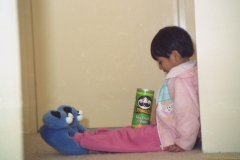
It was a time when taking photographs meant buying a film and taking 24 or 36 shots. You try to be careful with each shot and draw from your previous experiences. You would not see the results until after the roll is finished, developed and printed. One mistake on the camera setting and may mean the whole roll is ruined.
I bought my first SLR on April 1985 in Hong Kong, on my first overseas trip. It was a Canon AE-1 Program with a stock standard 50mm normal lens. I knew nothing about photography but before I loaded my first film, I bought a book. The idea is to understand all the controls in the camera. I quickly learned, about apertures and shutter speeds, flash, film ISO, priority settings. Then forgot everything except to keep the setting at “P” program , which the camera was designed for.
Photography was not a hobby to me, it was something that I thought I needed to learn and have a basic understanding. One could have just opted for a point-and-shoot but the quality of images from an SLR (single lens reflex) camera is worth the hassle of carrying it around.
Well, the era of negative films is truly over. The photos I’ve taken are not likely to be printed from negatives again. A lot of the prints are lost, in shoe boxes or albums that are slowly deteriorating with time.
I decided to digitised all of my surviving negatives whilst there are still scanners being sold in the market. These scanners are now becoming scarce and the negatives are also being destroyed by moulds.
The experience of scanning these photos and seeing these photographs again was a great experience. At first I was sharing the scanned negatives with Jeanne, Celine and Jessica. Then eventually I shared it with my cousins who also got a kick on seeing their younger selves. They posted it in their Facebook, some even used it as their profile picture for a while.
Next, I took a subscription and learned Adobe Lightroom and cleaned-up some of these photos. They are now part of my digital collection in Flickr.

Recent Comments